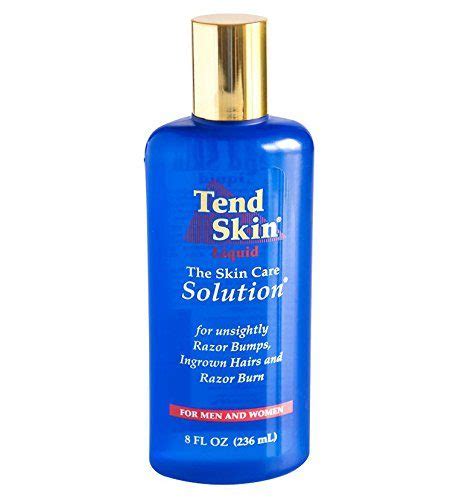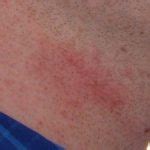How to prevent razor burn and ingrown hairs for peak shaving performance?

Achieving the Ultimate Smooth Shave: Your Guide to Preventing Razor Burn and Ingrown Hairs
Razor burn and ingrown hairs are two of the most frustrating and common byproducts of shaving, often leading to irritation, redness, and discomfort. While they might seem inevitable, achieving a consistently smooth, irritation-free shave is entirely possible with the right techniques and preparation. This guide will walk you through essential steps, from pre-shave rituals to post-shave care, ensuring you can enjoy peak shaving performance every time.

The Foundation: Pre-Shave Preparation
A great shave begins long before the blade touches your skin. Proper preparation softens the hair, opens pores, and creates a protective barrier, drastically reducing the chances of irritation.
1. Exfoliate Gently:
Before shaving, gently exfoliate your skin to remove dead skin cells and lift hairs that might be trapped. This prevents clogged pores and helps ensure an even shave. Use a mild facial scrub or an exfoliating brush 1-2 times a week, or a warm washcloth daily.
2. Warm Water & Steam:
Shaving after a warm shower is ideal. The steam and warm water soften your hair follicles, making them easier to cut and less likely to snag. If you can’t shower, apply a hot, damp towel to the area for a few minutes.
3. Lather Up with Quality Cream/Gel:
Invest in a high-quality shaving cream or gel. Look for products that create a rich, dense lather, providing lubrication and a protective cushion between the blade and your skin. Let the product sit on your skin for a minute or two before shaving to further soften the hair.

Mastering the Shaving Process
Your technique during the shave itself is paramount to preventing razor burn and ingrown hairs.
1. Use a Sharp, Clean Razor:
This is non-negotiable. A dull blade tugs at hairs, causing irritation and an uneven cut. Change your razor blade or disposable razor every 5-7 shaves, or sooner if you feel any pulling or discomfort. Always rinse your razor thoroughly after each use and allow it to air dry.
2. Shave With the Grain (Initially):
For sensitive skin or areas prone to ingrown hairs, always shave in the direction your hair grows (with the grain). This minimizes irritation. If you need a closer shave, you can reapply lather and go across the grain on a second pass, but avoid going against the grain if you’re prone to issues.
3. Apply Light, Consistent Pressure:
Let the razor do the work. Pressing too hard causes the blade to cut hair below the skin’s surface, increasing the risk of ingrown hairs and cuts. Use short, controlled strokes.
4. Rinse Your Razor Frequently:
Rinse your blade under running water after every few strokes to prevent hair and shaving cream from clogging the blades, ensuring an efficient and clean cut.

The Crucial Step: Post-Shave Care
The moments immediately after shaving are critical for calming the skin and preventing issues.
1. Rinse with Cold Water:
After shaving, rinse your face or body with cold water to close pores and soothe the skin.
2. Apply an Alcohol-Free Aftershave Balm:
Avoid aftershaves containing alcohol, as they can dry out and irritate the skin. Instead, opt for a soothing, alcohol-free balm or lotion with ingredients like aloe vera, witch hazel, or chamomile to hydrate and reduce redness.
3. Moisturize Regularly:
Keeping your skin hydrated helps prevent dryness and irritation, which can exacerbate razor burn and ingrown hairs. Moisturize daily, especially after shaving.
4. Wear Loose Clothing:
If you’re shaving body hair, tight clothing can rub against freshly shaved skin, causing friction and irritation. Opt for loose, breathable fabrics immediately after shaving.

Addressing Persistent Issues
If razor burn or ingrown hairs are a recurring problem, consider these additional strategies:
1. Regular Exfoliation Between Shaves:
Continue exfoliating gently a few times a week, even when you’re not shaving, to keep pores clear and prevent hairs from curling back into the skin.
2. Targeted Treatment Products:
Look for products specifically designed to combat ingrown hairs, often containing salicylic acid, glycolic acid, or tea tree oil. Apply them as directed.
3. Consider Shaving Alternatives or Tools:
If severe issues persist, explore different shaving tools like electric razors, single-blade safety razors, or even permanent hair removal methods. You might also consider letting your hair grow out for a period to allow skin to heal.
4. When to See a Professional:
If you experience painful, infected ingrown hairs or chronic skin irritation, consult a dermatologist. They can offer medical advice, prescribe treatments, or recommend alternative hair removal solutions.

Conclusion
Preventing razor burn and ingrown hairs isn’t about magical solutions, but rather a consistent commitment to proper technique and skin care. By incorporating these pre-shave, shave, and post-shave practices into your grooming routine, you can significantly reduce irritation, enjoy a closer, smoother shave, and maintain healthy, comfortable skin. Embrace these tips for peak shaving performance and say goodbye to common shaving woes.









